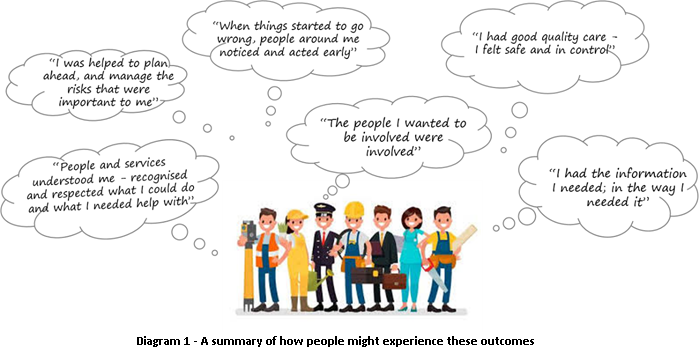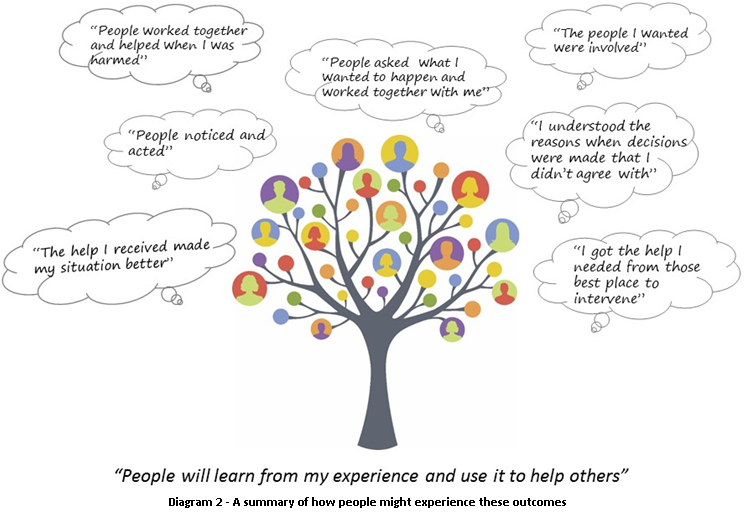Outcomes
Below we make some suggestions for translating the safeguarding principles into measurable outcomes. Local partners might find these a useful starting point in developing locally agreed visible outcomes that local communities, people and carers can understand and agree. We look at these from an individual and organisational perspective.
Individuals
Having information available in a timely fashion and in the way that is needed is paramount. Below are a few examples of how people have may experience the right outcomes tailored around them as an individual.


The table below demonstrating how people may experience the six principles of adult safeguarding and what the agencies' responsibilities may involve.
| Principles | Experience of the Individual | Responsibility of the Local agencies |
| Empowerment | "I am consulted about the outcomes I want from the safeguarding interventions and these directly inform what happens". | We give individuals relevant information about recognising abuse and the choices available to them to ensure their safety. We give them clear information about how to report abuse and crime and any necessary support in doing so. We consult them before we take any action. (Where someone lacks capacity to make a specific decision, we always act in his or her best interests). |
| Protection | "I am provided with help and support to report abuse. I am supported to take part in shaping safeguarding to the extent to which I want and to which I am able". | Our local complaints, reporting arrangements for abuse and suspected criminal offences and risk assessments work effectively. Our governance arrangements are open and transparent and communicated to people who use our services. |
| Prevention | "I am provided with easily understood information about what abuse is, how to recognise the signs and what I can do to seek help". | We can effectively identify and appropriately respond to signs of abuse and suspected criminal offences. We make staff aware, through provision of appropriate training and guidance, of how to recognise signs and take any appropriate action to prevent abuse occurring. In all our work, we consider how to make our community safer. |
| Proportionality | "I am confident that the responses to risk will take full account of my preferred outcomes or best interests". | We discuss with the individual and where appropriate with partner agencies the proportionality of possible responses to the risk of significant harm before we take a decision. Our arrangements support the use of professional judgement and the management of risk. |
| Partnership | "I am confident that agencies will work together to find the most effective responses for my own situation". | We have effective local information-sharing and multiagency partnership arrangements in place and staff understand these. We foster a "one" team approach that places the welfare of individuals above organisational boundaries. |
| Accountability | "I am clear about the roles and responsibilities of all those involved in the solution to the problem". | The roles of all agencies are clear, together with the lines of accountability. Staff understand what is expected of them and others. Agencies recognise their responsibilities to each other, act upon them and accept collective responsibility for safeguarding arrangements. |

